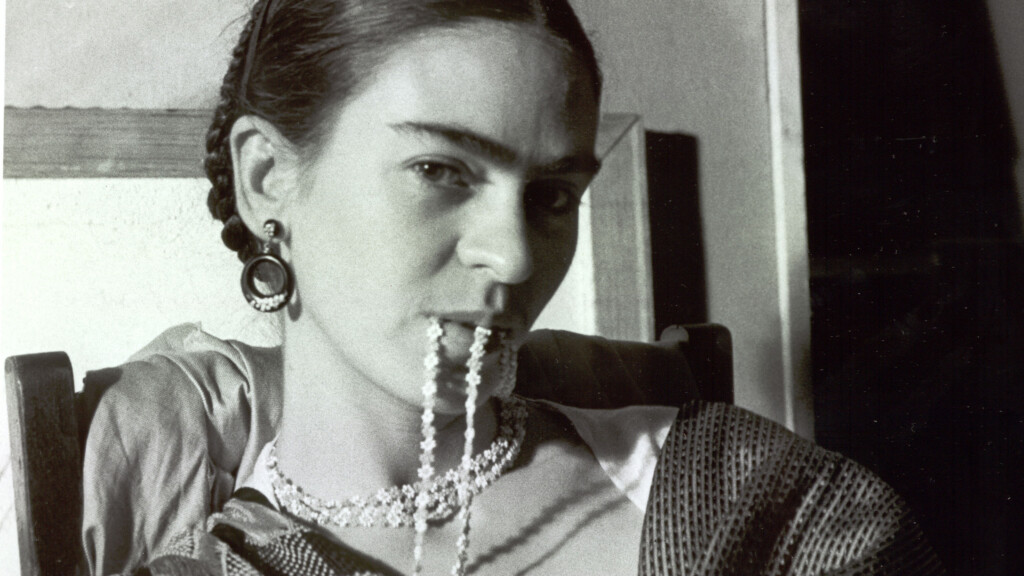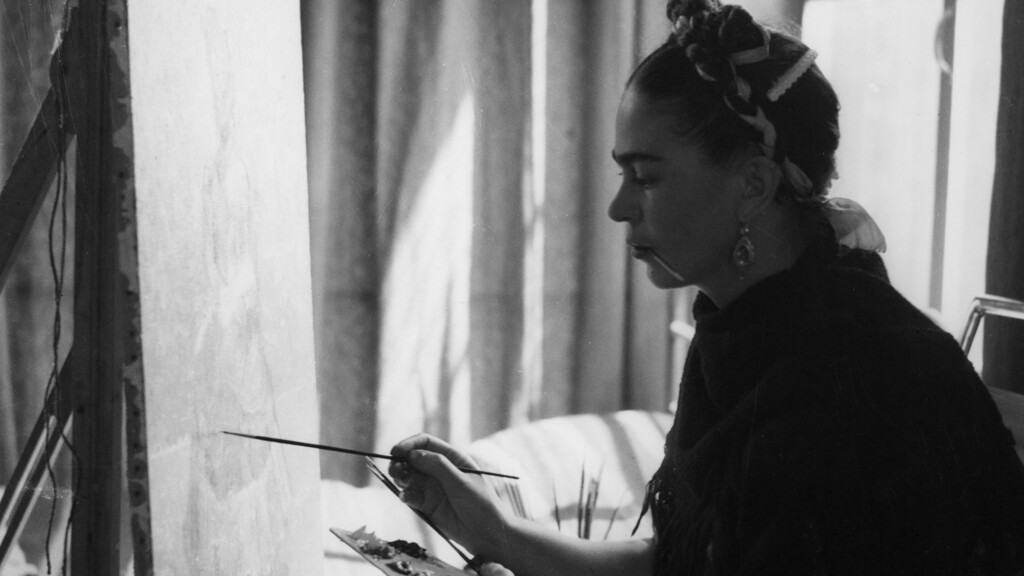Seventy years after her death at the age of 47, Frida Kahlo remains as popular as ever in contemporary culture, with a durability that matches or even surpasses that of prominent artists of her time such as Georgia O’Keeffe.
The recipient of the Jonathan Oppenheim Editing Award in the U.S. Documentary Competition at the 2024 Sundance Film Festival, Frida is a marvelous documentary tribute rendered entirely from a vast repository of primary archival materials about the Mexican artist. Frida, directed by Carla Gutiérrez, is sumptuous in its presentation, which draws its text entirely from Kahlo’s diary, correspondence, essays and print interviews. Kahlo’s words are narrated by Fernanda Echevarría, who sets the appropriate rhythm for the narrative. Nearly every member of Gutiérrez’s production team also has roots in Mexico, including the animators who add the proper lyrical touches to the film’s richly layered portrait.
Gutiérrez packs a lot into a surprisingly conventional structure that encompasses Kahlo’s life, by following a chronological timeline. Among two of the most prominent sources that helped Gutiérrez shape her cinematic portrait were Hayden Herrera’s 1983 biography of the artist and a short documentary made in 1976, The Life and Death of Frida Kahlo, by Karen and David Crommie. In a talkback after a Salt Lake City screening of the film, Gutiérrez said the transcriptions of the interviews which Herrera used in her book came from boxes stored in the author’s home.

Courtesy of Sundance Institute | photo by Lucienne Bloch.
Likewise, there is a good amount of attention given to Diego Rivera and their undeniably complicated relationship. Some might wonder why Frida would devote a still good chunk of screen time to their relationship, if the thematic intent is to celebrate Kahlo’s sense of artistic freedom and maverick spirit. But, it still makes sense, especially in this 2024 testament of appreciation. In 2015, there was an exhibition Diego Rivera and Frida Kahlo in Detroit at the Detroit Institute of Art. The museum is home to the famous Detroit Industry frescoes that Rivera created in 1932, as part of efforts to ensure the museum could stay afloat during the Great Depression.
The exhibition was served in three sections, Before, During and After, relating to their residency in Detroit. It was during the time when Rivera began work on the frescos that Kahlo had become pregnant but soon lost the child. One of the paintings Kahlo made was Henry Ford Hospital. As Ben Davis described the painting in a review of the show that was published at ArtNet, “A bed floats in a barren plane. On it, Kahlo has painted herself, blood staining the sheets. Red threads branch from her abdomen connecting to various floating objects, hieroglyphic representations of trauma: an anatomical model; a crumpled orchid, inspired by the ones that Rivera had brought her in the hospital; a fractured pelvic bone; and so on.”
As Davis went on to explain, the event ended up becoming part of the frescos, as Rivera decided that the east-facing panel in the museum would have the image of an unborn child, nestled within the bulb of a plant, as opposed to a tableau celebrating agricultural workers, which he originally planned.

But, in the painting Henry Ford Hospital, Kahlo has made sure the work prominently features the institution’s name. The painting underscores Kahlo’s feelings of isolation as an outsider. Davis relies on this example to illustrate a point that also comes to the foreground in Gutiérrez’s film: “If Kahlo’s work strikes us today as more alive, this is not only because social realism has gone out of vogue in favor of the intimate and the psychological. It’s almost the opposite, I think: Because Rivera became trapped in celebrating his host, he had to step back from the painful reality of the world he was depicting; Kahlo’s art, unencumbered by this burden and focusing on her own experience, actually does express some of that missing reality.”
Stills of these works are featured in Frida. Another prominent example, which emphasizes how Kahlo’s art was rooted in spaces quite to the contrary of her romantic partner is Self-Portrait on the Border between Mexico and the United States, also created in 1932, when the artist was just 25 years old. In a Women’s Art Journal article from 25 years ago, Rebecca Block and Lynda Hoffman-Jeep suggested that works like this signified how astute Kahlo was about the appearance of clothing in communicating a sense of her multidimensional identity and roots and her endorsement of revolutionary ideals.

Courtesy of Sundance Institute | photo by Leo Matiz.
As Lola Alvarez Bravo, a friend of Kahlo, noted, “She was like birds and flowers and knitted quilts, a Mexican mood concentrated in an epoch and all expressed through her.” And, Gutiérrez amplifies these sentiments successfully in Frida, with an entertaining dose of well-placed information and analysis.
The film will be released after Sundance on Prime Video globally on March 15. For more information about Sundance and ticket information, see the festival website.
